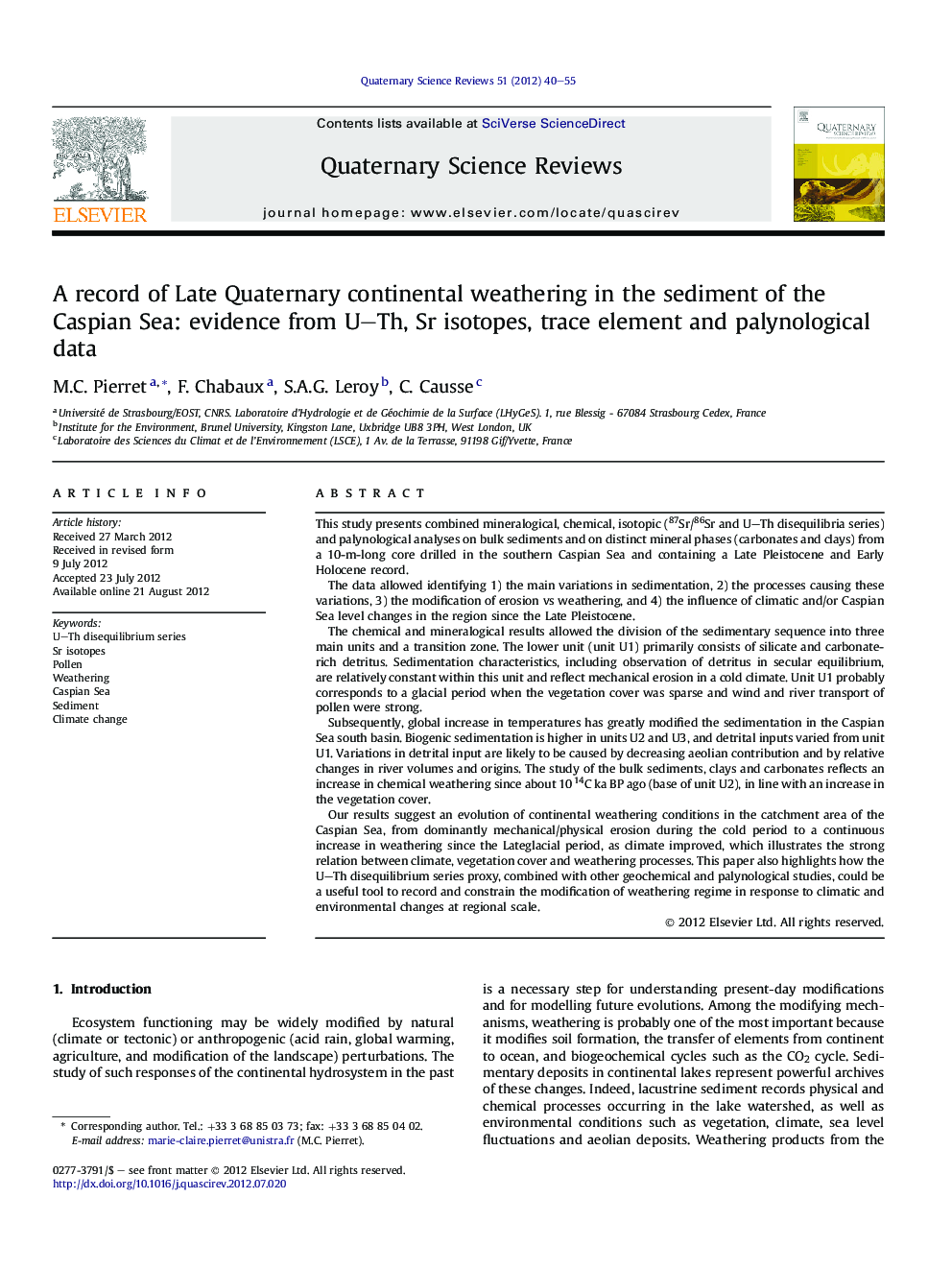| کد مقاله | کد نشریه | سال انتشار | مقاله انگلیسی | نسخه تمام متن |
|---|---|---|---|---|
| 4737214 | 1640883 | 2012 | 16 صفحه PDF | دانلود رایگان |

This study presents combined mineralogical, chemical, isotopic (87Sr/86Sr and U–Th disequilibria series) and palynological analyses on bulk sediments and on distinct mineral phases (carbonates and clays) from a 10-m-long core drilled in the southern Caspian Sea and containing a Late Pleistocene and Early Holocene record.The data allowed identifying 1) the main variations in sedimentation, 2) the processes causing these variations, 3) the modification of erosion vs weathering, and 4) the influence of climatic and/or Caspian Sea level changes in the region since the Late Pleistocene.The chemical and mineralogical results allowed the division of the sedimentary sequence into three main units and a transition zone. The lower unit (unit U1) primarily consists of silicate and carbonate-rich detritus. Sedimentation characteristics, including observation of detritus in secular equilibrium, are relatively constant within this unit and reflect mechanical erosion in a cold climate. Unit U1 probably corresponds to a glacial period when the vegetation cover was sparse and wind and river transport of pollen were strong.Subsequently, global increase in temperatures has greatly modified the sedimentation in the Caspian Sea south basin. Biogenic sedimentation is higher in units U2 and U3, and detrital inputs varied from unit U1. Variations in detrital input are likely to be caused by decreasing aeolian contribution and by relative changes in river volumes and origins. The study of the bulk sediments, clays and carbonates reflects an increase in chemical weathering since about 10 14C ka BP ago (base of unit U2), in line with an increase in the vegetation cover.Our results suggest an evolution of continental weathering conditions in the catchment area of the Caspian Sea, from dominantly mechanical/physical erosion during the cold period to a continuous increase in weathering since the Lateglacial period, as climate improved, which illustrates the strong relation between climate, vegetation cover and weathering processes. This paper also highlights how the U–Th disequilibrium series proxy, combined with other geochemical and palynological studies, could be a useful tool to record and constrain the modification of weathering regime in response to climatic and environmental changes at regional scale.
► Recent Caspian Sea sediments allow reconstruction of main climate changes.
► The main lithological units correspond to different climatic ages.
► Chemical, mineralogical, isotopic, palynological variations follow the units.
► U–Th disequilibrium shows modifications of erosion/weathering processes.
► Weathering regime increased since about 10 ka BP ago.
Journal: Quaternary Science Reviews - Volume 51, 19 September 2012, Pages 40–55